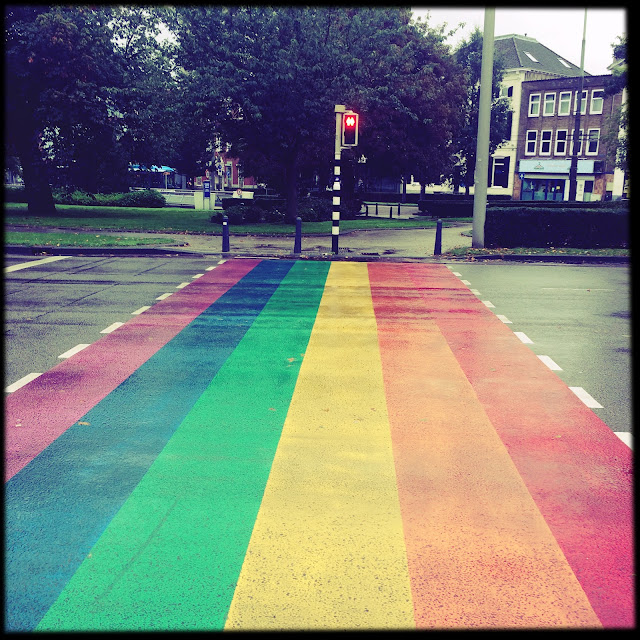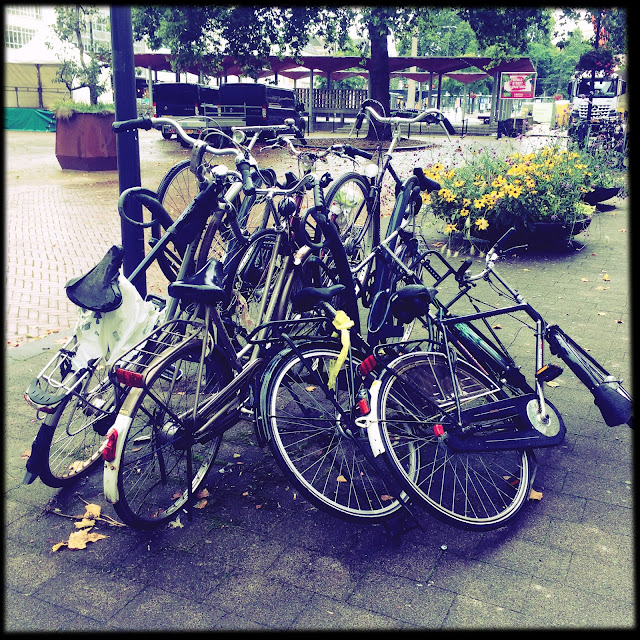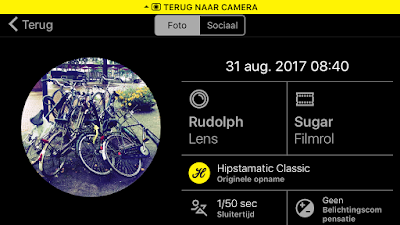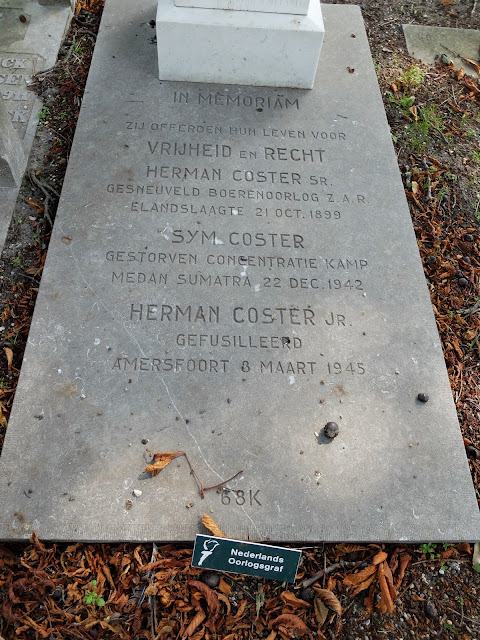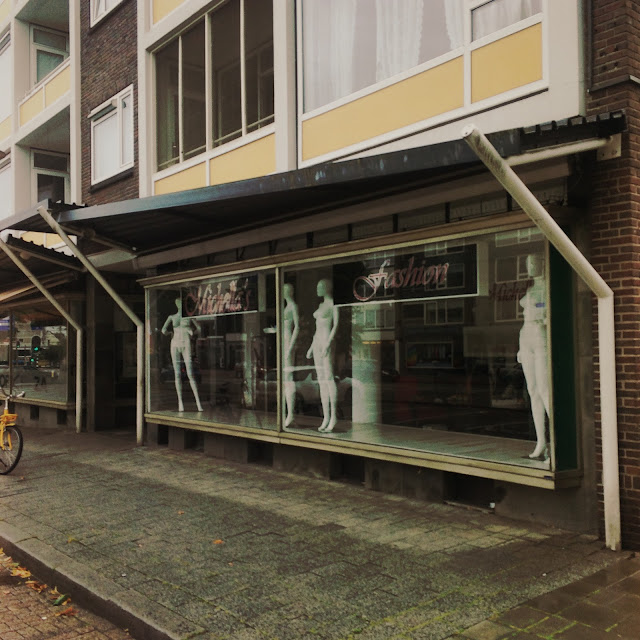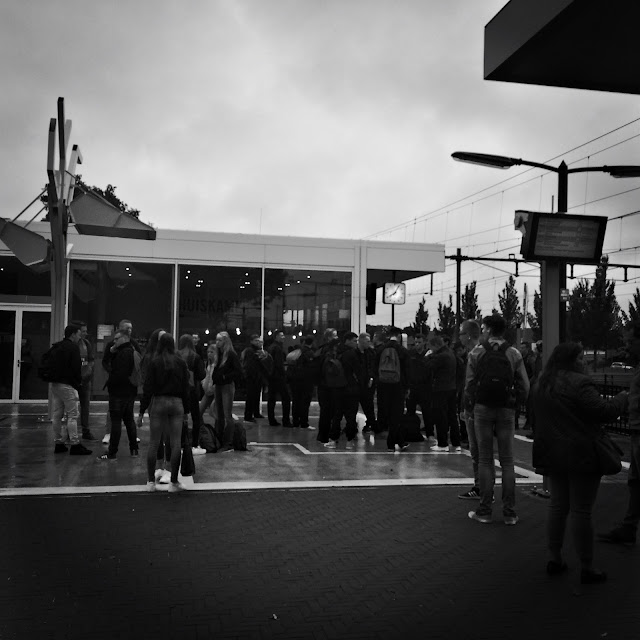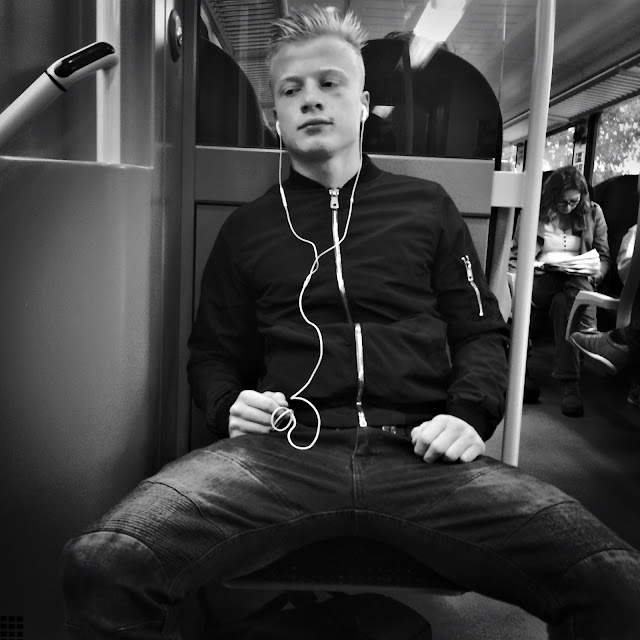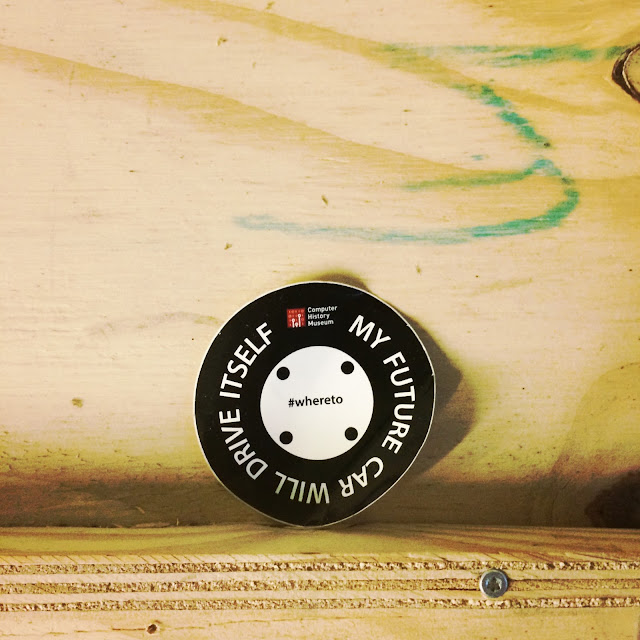31 augustus 2017
In memoriam Herman Coster Sr.
Op begraafplaats Oud Eik en Duinen in Den Haag vind je het volgende monument:
Op zich niet zo vreemd. Alleen, Herman Coster (1865 - 1899) ligt begraven in Pretoria. Op Wikipedia worden wel de volgende monumenten genoemd:
Plaque ter nagedachtenis aan Herman Coster, Academiegebouw (Leiden)
Herdenkingsmonument bij Elandslaagte
Herdenkingsmonument verwoest (2014)
Graf van Coster in Pretoria
Maar geen woord over het monument op Oud Eik en Duinen dus. Reden genoeg om foto 2 dan maar naar de Wikimedia-pagina voor de categorie ‘Hermanus Jacob Coster’ te uploaden.
Wikipedia - Herman Coster:
Herman Coster volgde zijn schoolopleiding aan de H.B.S. te Alkmaar en het Stedelijk Gymnasium in Leiden. Daarna ging hij rechten studeren in Leiden waar hij ook president van het studentencorps werd. Zijn oom, de Haagse arts T.H. Blom Coster, was tijdens zijn studie zijn beschermheer. Herman Coster sympathiseerde met de jonge Vlaamse Beweging. Hij promoveerde in 1890 op het proefschrift Openbare vrijwillige verkoping.
Toen zijn familie failliet ging, vertrok hij naar Transvaal. Hij werd advocaat en trad van 1895-1897 op verzoek van Paul Kruger op als staatsprocureur. Na een belediging van de "Hollanders" door Kruger nam Coster ontslag en ging hij weer werken als advocaat.
Coster werd gedood tijdens de slag bij Elandslaagte waarbij ook officier Cars Geerts de Jonge sneuvelde en zeven manschappen: P.J. van den Broek, H. van Cittert, J.A. Lepeltak Kieft, Jan Moora, J.Th. Rummeling, M. Schaink, F.W. Wagner. Hun namen stonden op een monument ter plaatse, dat in 2014 werd verwoest. De gestorvenen maakten deel uit van het Hollanderkorps, een vrijwilligerseenheid van 130 mannen die een maand eerder was opgericht. De Slag bij Elandslaagte was het eerste en meteen laatste optreden van het korps. Er werden na de slag ook nog ca. 35 mannen gevangengenomen.
Op zich niet zo vreemd. Alleen, Herman Coster (1865 - 1899) ligt begraven in Pretoria. Op Wikipedia worden wel de volgende monumenten genoemd:
Maar geen woord over het monument op Oud Eik en Duinen dus. Reden genoeg om foto 2 dan maar naar de Wikimedia-pagina voor de categorie ‘Hermanus Jacob Coster’ te uploaden.
Wikipedia - Herman Coster:
Herman Coster volgde zijn schoolopleiding aan de H.B.S. te Alkmaar en het Stedelijk Gymnasium in Leiden. Daarna ging hij rechten studeren in Leiden waar hij ook president van het studentencorps werd. Zijn oom, de Haagse arts T.H. Blom Coster, was tijdens zijn studie zijn beschermheer. Herman Coster sympathiseerde met de jonge Vlaamse Beweging. Hij promoveerde in 1890 op het proefschrift Openbare vrijwillige verkoping.
Toen zijn familie failliet ging, vertrok hij naar Transvaal. Hij werd advocaat en trad van 1895-1897 op verzoek van Paul Kruger op als staatsprocureur. Na een belediging van de "Hollanders" door Kruger nam Coster ontslag en ging hij weer werken als advocaat.
Coster werd gedood tijdens de slag bij Elandslaagte waarbij ook officier Cars Geerts de Jonge sneuvelde en zeven manschappen: P.J. van den Broek, H. van Cittert, J.A. Lepeltak Kieft, Jan Moora, J.Th. Rummeling, M. Schaink, F.W. Wagner. Hun namen stonden op een monument ter plaatse, dat in 2014 werd verwoest. De gestorvenen maakten deel uit van het Hollanderkorps, een vrijwilligerseenheid van 130 mannen die een maand eerder was opgericht. De Slag bij Elandslaagte was het eerste en meteen laatste optreden van het korps. Er werden na de slag ook nog ca. 35 mannen gevangengenomen.
Labels:
Den Haag,
Herman Coster,
Oud Eik en Duinen,
Wikimedia,
Wikipedia
Portrait of Mauma Mollie
World Digital Library:
Portrait of Mauma Mollie
Mauma, a Partridge family slave, was transported to South Carolina on a slave ship from Africa. She came to Jefferson County, Florida with John and Eliza Partridge in the 1830s, and was Frances Weston Partridge’s nurse. Henry Edward Partridge recorded in his diary in 1873: “We buried either in 57 or 58 our faithful old ‘Mauma’ Mollie – her who had nursed nearly all of the children of the family; been a friend as well as faithful servant to my Mother; in whose cabin we had often eaten the homely meal of fried bacon & ash cake and where we always had welcome and sympathy and whom we loved as a second mother. Black of skin but pure of heart, she doubtless stands among the faithful on the right of the King.” “Mammies” were a central aspect of the cultural memory of slavery in the American South and the mythology of race relations. While the image shows a slave who was beloved by the family that owned her and who in remembrance was considered a member of the family, it gives no insight into Mollie’s interior life. Neither portrait nor diary entry give any insight into what she thought of the quality of her life or about her servitude, or other aspects of her private life, such as whether she had a spouse or children.
Date Created - Around 1850
Place - North America > United States of America > Florida > Monticello
Physical Description - 1 photoprint: black and white; 10 x 8 inches
Institution - State Library and Archives of Florida
Portrait of Mauma Mollie
Mauma, a Partridge family slave, was transported to South Carolina on a slave ship from Africa. She came to Jefferson County, Florida with John and Eliza Partridge in the 1830s, and was Frances Weston Partridge’s nurse. Henry Edward Partridge recorded in his diary in 1873: “We buried either in 57 or 58 our faithful old ‘Mauma’ Mollie – her who had nursed nearly all of the children of the family; been a friend as well as faithful servant to my Mother; in whose cabin we had often eaten the homely meal of fried bacon & ash cake and where we always had welcome and sympathy and whom we loved as a second mother. Black of skin but pure of heart, she doubtless stands among the faithful on the right of the King.” “Mammies” were a central aspect of the cultural memory of slavery in the American South and the mythology of race relations. While the image shows a slave who was beloved by the family that owned her and who in remembrance was considered a member of the family, it gives no insight into Mollie’s interior life. Neither portrait nor diary entry give any insight into what she thought of the quality of her life or about her servitude, or other aspects of her private life, such as whether she had a spouse or children.
Date Created - Around 1850
Place - North America > United States of America > Florida > Monticello
Physical Description - 1 photoprint: black and white; 10 x 8 inches
Institution - State Library and Archives of Florida
Labels:
Florida,
portretten,
slavernij,
VS
Abonneren op:
Reacties (Atom)

